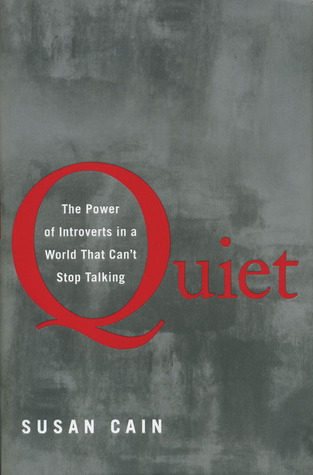
Quiet: The Power of Introverts in a World That Can't Stop Talking
Book Description
In a world that reveres loud voices and extroverted charisma, one power remains shrouded in silence: the profound strength of introverts. Susan Cain takes you on a captivating journey through the underestimated brilliance of those who prefer to listen rather than shout, revealing how their thoughtful insights can spark innovation and change. From the boardroom to the classroom, the quiet have been overlooked, yet they possess a unique ability to reshape society. With a blend of compelling research and heartfelt stories, this book challenges everything you thought you knew about success. What if the key to unlocking true potential lies in embracing the quiet?
Quick Book Summary
"Quiet: The Power of Introverts in a World That Can't Stop Talking" by Susan Cain explores the undervalued strengths and unique contributions of introverts in a society that often celebrates extroversion. Drawing on psychology, neuroscience, and real-life stories, Cain reveals that introverts contribute profoundly to creativity, leadership, and innovation by leveraging their quiet, reflective nature. The book challenges the prevailing cultural bias that equates talkativeness and assertiveness with success, encouraging readers to recognize and cultivate the talents of introverts. Cain advocates for environments where introverts can thrive, urging workplaces, schools, and families to appreciate diverse personality types. Ultimately, "Quiet" empowers both introverts and extroverts to better understand themselves and each other.
Summary of Key Ideas
Table of Contents
Reevaluating the Extrovert Ideal
Our culture has long held the "Extrovert Ideal"—a belief that outgoing, assertive, energetic people are inherently more valuable, especially in leadership, business, and social settings. Cain begins by challenging this assumption, drawing on historical context and current societal norms. She examines how Western society, especially in America, began to elevate extroverted behaviors at the turn of the 20th century, marginalizing those who are quiet, reflective, and inward-focused. This bias shapes everything from hiring practices to classroom dynamics, creating obstacles for introverts.
The Science Behind Introversion and Extroversion
Cain delves into the scientific understanding of personality differences, particularly the physiological and genetic markers distinguishing introverts from extroverts. She highlights research on brain activity, sensitivity to stimulation, and neurotransmitter responses that explain why introverts and extroverts experience the world so differently. Through interviews with psychologists and analysis of twin studies, she shows that introversion and extroversion are innate yet exist along a spectrum, suggesting that personality should be seen as a nuanced continuum rather than a binary trait.
Strengths and Skills Unique to Introverts
The book underscores the unique strengths introverts bring, such as keen listening skills, deep focus, and the ability to foster strong one-on-one relationships. Their capacity for deliberate thinking and preference for depth over breadth can lead to innovative problem-solving and creativity. Cain explores examples from the arts, science, and business—such as Rosa Parks and Steve Wozniak—to demonstrate how introverts have made lasting, transformative impacts. Rather than viewing introversion as a liability, she encourages individuals and institutions to see it as a source of quiet power.
Nurturing Environments for All Personality Types
Cain offers practical advice on creating environments where both introverts and extroverts can thrive. For schools, this means allowing alternative participation methods beyond group work; for businesses, promoting flexible workspaces and allowing autonomy. She also addresses how parents can support introverted children by honoring their need for solitude and deep thought. Overall, Cain advocates for recognizing and accommodating different working and learning styles to maximize everyone’s contributions.
Introverts in Leadership and Collaboration
The narrative concludes by reframing leadership and collaboration, showing that introverts are often highly effective leaders when given the chance. Their emphasis on careful listening, team empowerment, and thoughtful decision-making adds balance and value to groups and organizations. Cain encourages introverts to embrace their natural tendencies rather than conforming to extroverted norms, inspiring both individuals and society to harness the full spectrum of human personality.
Download This Summary
Get a free PDF of this summary instantly — no email required.





